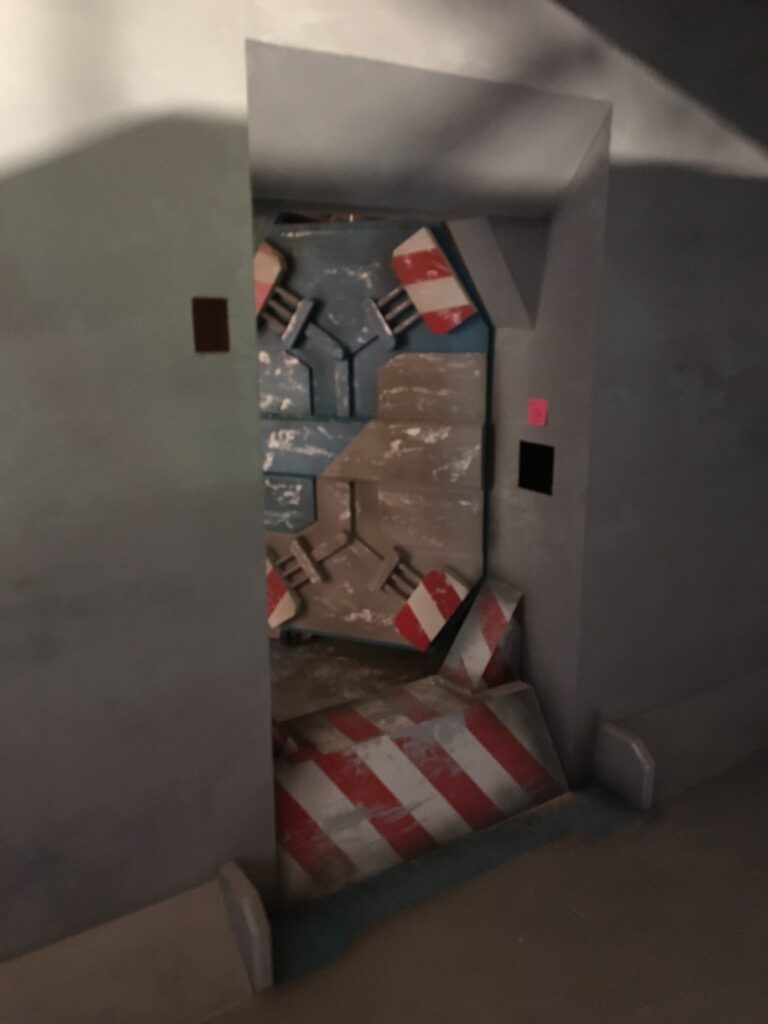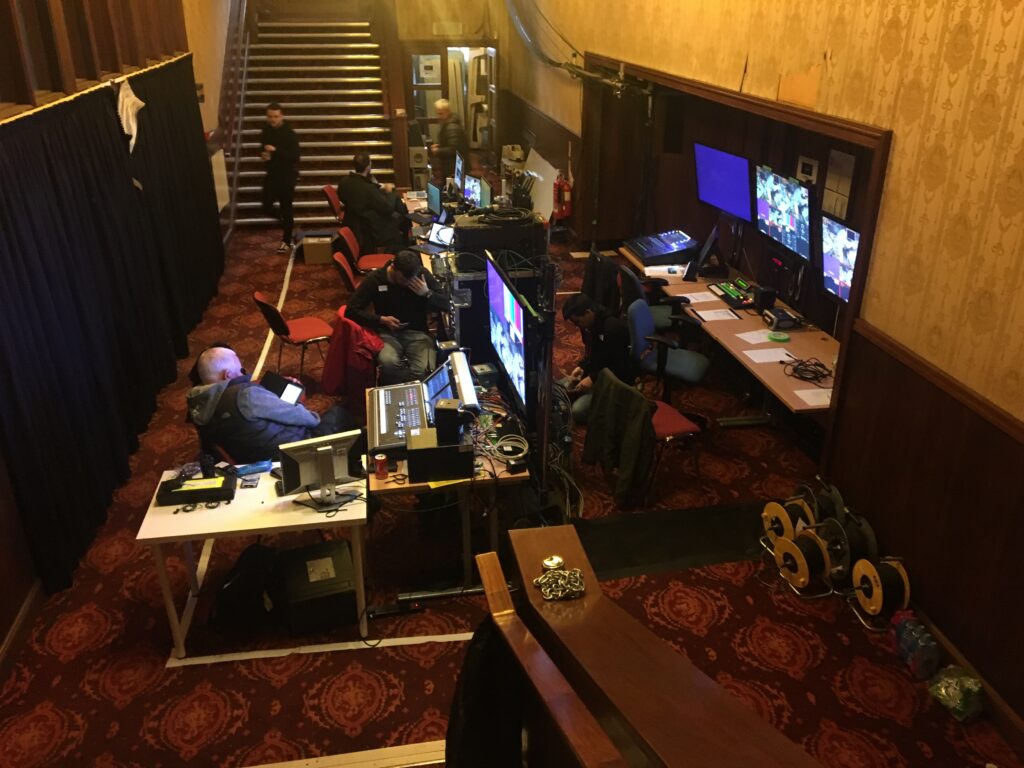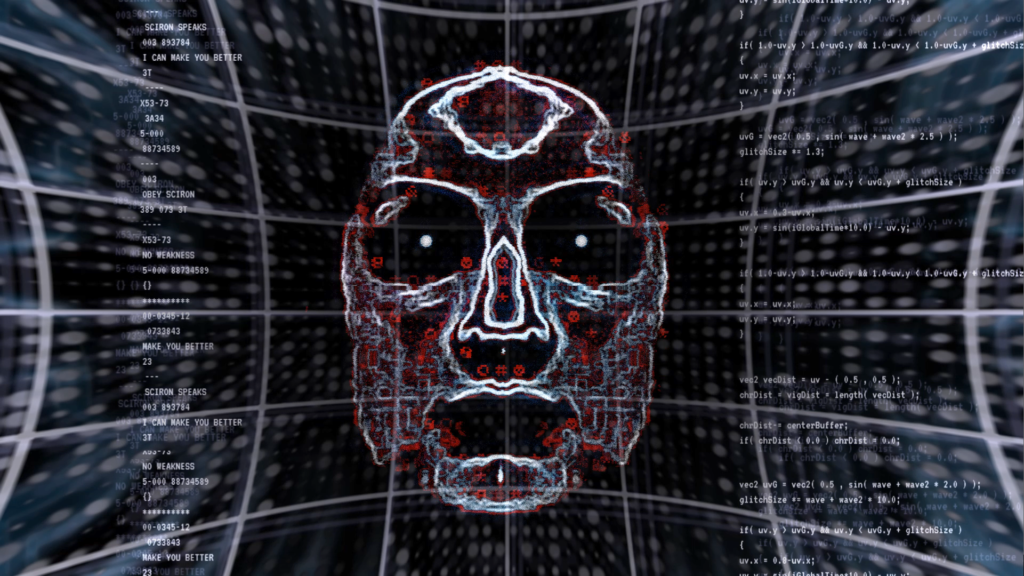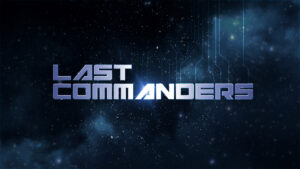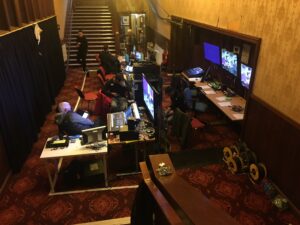Last Commanders
Background
Across the course of 10 episodes, we get to be part of the story of the Kaladian’s rebellion against the evil Sciron and her henchmen. Each episode sees four groups of children choose their avatar, interact with Skye, then play their game by giving the avatar directions over Skype. The children see a feed of the avatar’s wireless head-mounted camera as a first-person point of view. The feed is overlaid with a real-time Heads-Up Display (HUD) graphic, giving the illusion that the children are playing a video game where they are controlling the action simply by giving verbal commands. The children are free to direct the avatar as they wish, and there are multiple ways to solve many of the puzzles and challenges, but they must move quickly as a ‘Game Over’ screen could be around any corner!
Creative Motion Graphics
We’re also responsible for the visualisation of the story’s evil villain….Sciron. Being trapped inside a self-aware malevolent super-computer, Sciron’s presence can only be felt on screens around the space station, and her monologues and dialogue with the avatar and the children are a key part of the plot development. We worked closely with Jump Design and Direction and took audio from the actress who played the part of Sciron. Using a suite of off-the-shelf tools, we created a real-time visualisation that constantly evolves and animates on the on-set screens, and reacts in real-time to the dialogue giving the impression that Sciron is ‘speaking’ to the avatar and the children
Kinetic Innovation
The show’s producers presented us with a number of technical challenges, the biggest one being how to reliably enable the children to Skype in to the show and ensure high quality of service every time. We supplied and configured 20 laptops with webcams, microphones, LED panel lamps and clear child-friendly instructions covering the setup and pack-down of the kit. Our engineering team designed smart software that managed the complete startup process, meaning all the children had to do was plug in the colour-coded cables, power on, and type in their Wi-Fi password.
Our team in studio received notifications giving the status of each laptop, and could initiate Skype calls and production could assist with the setup and staging of the room ready for the record. More bespoke software allowed us to control the recording of the raw web-cam feed to the local laptop drive. These rushes were then either delivered via an automated process as soon as the game was over, or copied off the laptop when it was returned to base.
Production Info
- Production Company : Objective Media Group
- Network : CBBC
- Studio Facility : Film City
Synopsis
Can four teams of Commanders successfully direct their avatars to complete their mission and help Skye fight back against rogue A.I. Sciron? For freedom!
Production Credits
- Executive Producer : Toby Stephens
- Series Producer : Lou Brown
- Series Director : Derek Stuart
- Lighting Director : Dave Thom
- Set Designer : Moley Campbell
- Production Manager/Executive : Gillian Hamilton
- Graphic Design : Jump Design
Production Info
- Production Company : Objective Media Group
- Network : CBBC
- Studio Facility : Film City
Synopsis
Can four teams of Commanders successfully direct their avatars to complete their mission and help Skye fight back against rogue A.I. Sciron? For freedom!
Production Credits
- Executive Producer : Toby Stephens
- Series Producer : Lou Brown
- Series Director : Derek Stuart
- Lighting Director : Dave Thom
- Set Designer : Moley Campbell
- Production Manager/Executive : Gillian Hamilton
- Graphic Design : Jump Design
Background
Across the course of 10 episodes, we get to be part of the story of the Kaladian’s rebellion against the evil Sciron and her henchmen. Each episode sees four groups of children choose their avatar, interact with Skye, then play their game by giving the avatar directions over Skype. The children see a feed of the avatar’s wireless head-mounted camera as a first-person point of view. The feed is overlaid with a real-time Heads-Up Display (HUD) graphic, giving the illusion that the children are playing a video game where they are controlling the action simply by giving verbal commands. The children are free to direct the avatar as they wish, and there are multiple ways to solve many of the puzzles and challenges, but they must move quickly as a ‘Game Over’ screen could be around any corner!
Creative Motion Graphics
We’re also responsible for the visualisation of the story’s evil villain….Sciron. Being trapped inside a self-aware malevolent super-computer, Sciron’s presence can only be felt on screens around the space station, and her monologues and dialogue with the avatar and the children are a key part of the plot development. We worked closely with Jump Design and Direction and took audio from the actress who played the part of Sciron. Using a suite of off-the-shelf tools, we created a real-time visualisation that constantly evolves and animates on the on-set screens, and reacts in real-time to the dialogue giving the impression that Sciron is ‘speaking’ to the avatar and the children
Kinetic Innovation
The show’s producers presented us with a number of technical challenges, the biggest one being how to reliably enable the children to Skype in to the show and ensure high quality of service every time. We supplied and configured 20 laptops with webcams, microphones, LED panel lamps and clear child-friendly instructions covering the setup and pack-down of the kit. Our engineering team designed smart software that managed the complete startup process, meaning all the children had to do was plug in the colour-coded cables, power on, and type in their Wi-Fi password.
Our team in studio received notifications giving the status of each laptop, and could initiate Skype calls and production could assist with the setup and staging of the room ready for the record. More bespoke software allowed us to control the recording of the raw web-cam feed to the local laptop drive. These rushes were then either delivered via an automated process as soon as the game was over, or copied off the laptop when it was returned to base.

